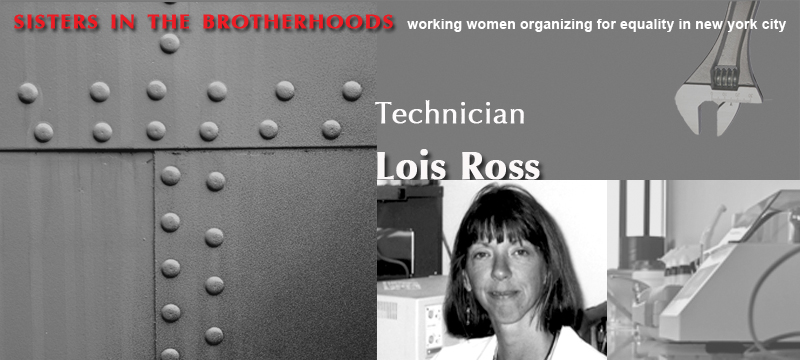 |
||||||
|
||||||
|
Lois Ross grew up in a blue-collar union household in Bloomfield, New Jersey. Both of her parents worked in factories and belonged to trade unions. “They were both very vocal union supporters,” she recalled. “They always told me unions are essential to working people’s lives—without unions, working people would be nowhere.”
Ross entered Rutgers University in 1972, the year it went coed. The student body was overwhelmingly male, however, and some female students organized consciousness-raising groups to discuss issues they faced on campus and in the classroom. Ross hosted weekly meetings in her dorm and became active in the feminist movement. She had intended to become a lawyer but switched her major to economics after taking a course in that subject. Near the end of her time at Rutgers, she took some labor economics courses and settled on the focus of her activism: women and the economy and occupational segregation. Despite receiving offers of scholarships to pursue a Ph.D. in economics, Ross chose the path of activism. After working for a community group in New Jersey, she joined the fledgling Women in Apprenticeship Program (WAP) in 1978 as its first employee. She was eager to apply academic theories about gender segregation in the workplace within an activist organization. Her responsibilities included recruitment, counseling, and job development. She worked to develop placements for women in skilled trades’ jobs and in apprenticeship and training programs. WAP provided Ross with a launching pad for United Tradeswomen (UT), a group she co-founded in 1979. She largely was responsible for giving UT life and keeping it going until its demise iin 1985. After seven years with WAP (renamed Nontraditional Employment for Women), she pursued a new career in electronics. She enrolled in an 18-month training program, and near its completion she quickly settled on her new career: biomedical engineering, a field that appealed to her sense of social responsibility and her technical aptitude. She worked at hospitals in New Jersey and in 1986 joined the biomedical engineering department at St. Luke’s-Roosevelt Hospital in New York City. The field of biomedical engineering is dependent upon on-the-job training, and teaching became an increasingly important part of her job. Ross became the leader of the team that supervised equipment installation and trained medical personnel. She also helped to bring other women into the department. In 2001 Ross received a master’s degree in communications, computing, and technology from Teacher’s College at Columbia University. Sinc then she has been designing curriculum and teaching innovative courses on computers, engineering, and electronics. She also is active in organizations dedicated to preserving natural habitats. In her oral history Ross discusses her activism, United Tradeswomen, her career change, and the ongoing need for programs that recruit and mentor women in technical fields. |
|||||
| ||||||
Copyright 2012 Jane LaTour/Talking History |
||||||
